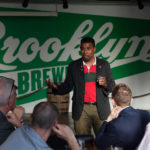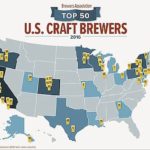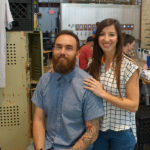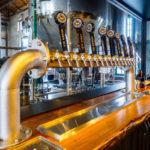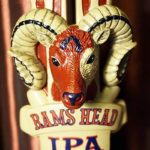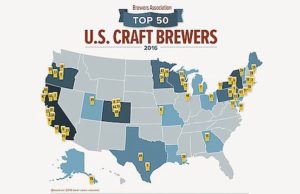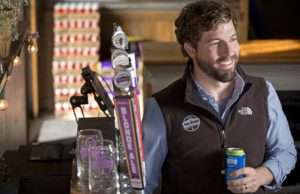All aboard for beer
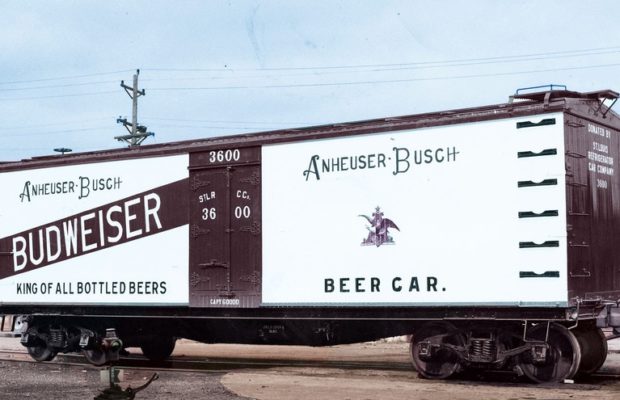
Cold beer. We take it for granted. The bottle, the can, the six pack – as close as the corner store, the kitchen fridge, or the cooler on the deck.
But it wasn’t always that easy. The late 19th century was considered the golden age of beer, with the clear, light in color and body, lager beers served cold, becoming the favored beer of the time. Breweries were a local business – they served the immediate adjacent areas – the City of Brooklyn once had 39 breweries to slake the thirst of just under 1 million people. And there were no national brands – yet.
The challenge was to get beer from brewery to market more than a few miles from where it was made. Beer came from the brewery in barrels – it was not yet bottled at the brewery due to tax laws. Bottling works were often just across the street from the brewery, but beer was taxed by the barrel and that was the unit that had to be shipped. If lager beer warmed up it would spoil, and there was no use for a barrel of sour beer. It had to be kept cool until it was ready for consumption and the railroad was the only practical way to ship barrels long distances, when a full barrel weighed more than 200 pounds.
In 1878, a thousand miles away from St Louis, Missouri, Jacob Wirth of Boston, Massachusetts, moved his 10-year-old German restaurant to a bigger location, 31-37 Stuart Street. Wirth grew up in the same village in South West Germany as the Anheuser family, and he became the first distributor of Anheuser Busch products.
By 1878, there was enough demand for Anheuser Busch products outside of the St. Louis area that the brewery established the St. Louis Refrigerator Car Company, to build and maintained their own fleet of cars. They had begun shipping by railroad the previous year.
The refrigerator car was not that much different than the cooler on your deck. (Or the kitchen ice box of the era.) There is nothing mechanical about the cooling system. Add ice to an insulated container – your cooler uses foam for insulation; the reefer cars used horse hair, shredded paper or sawdust, to trap air in a layer separated from the outside temperatures.
There were various attempts at refrigerated cars going back to the 1840s and it seems to have begun with transporting fresh meat to market. Fruit and vegetables were the next to utilize this type of rail car. To service these cars along the road, icing stations were placed along the routes – the West and the Midwest had the products but the money was in the Eastern markets, and the Anheuser Busch company put its product on the road.
Jacob Wirth became the distributor and exporter of the brewery’s Budweiser brand, bottling the beer from the barrels and labeling them for home consumption or to pack for your Sunday afternoon picnic. With no home refrigeration, most beer was consumed in saloons, and saloons were closed on Sunday.
The only known survivor of the The St. Louis Refrigerator Company is car 3600, built in 1904. Today it sits at the Museum of Transportation in St. Louis, Missouri. This car must have been on the road away from the brewery in March of 1905 when a fire destroyed the brewery depot and 17 refrigerator cars.
The cars were still being built in the 1940s, just before WWII, when 25 new cars were ordered by the brewer – these later cars would be constructed of plywood. Over the years, there would be some 850 cars built by the company. Unlike the cars that transported meat and produce, the beer cars were not returned empty – the barrels were returned to the brewery to be sanitized and refilled.
Jacob Wirth is no longer in the beer distribution business but his Boston restaurant is still serving on Stuart Street, Budweiser is still around. If it hadn’t been for the railroads, the American brand Budweiser might have remained a local beer and never left the St. Louis area.
The real innovation of the refrigerated beer car was speed – before this, beer traveled by horse or by ship. Beer had never been shipped so far, and so fast, as when it traveled by train.
To see other images of the car or to find out how to visit the collection, visit the Museum of Transportation website, transportmuseumassociation.org.
For more information about car 3600, go here.
The Colorado Railroad Museum has a re-creation of a Coors refrigerator car. The car itself is a 1929 Western Fruit Express car. Acquired in 1971 by the museum, the Coors Company painted the car to match the cars that Coors leased in the 1930’s just after the end of Prohibition.
Click here to view original web page at tracks.lionel.com







